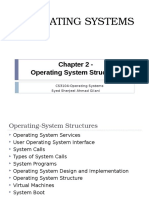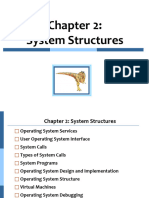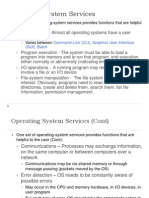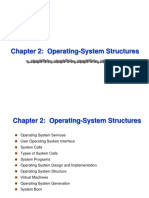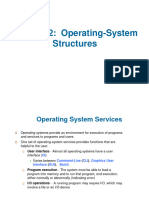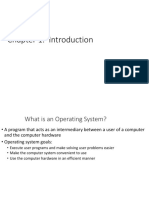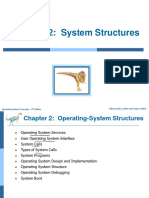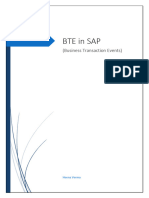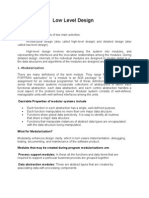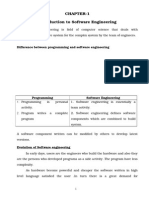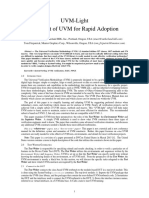0% found this document useful (0 votes)
114 views52 pagesOS Structures for Developers
The document discusses operating system structures and services. It describes how operating systems provide services to users like program execution, I/O operations, file manipulation, and communications. It also discusses how operating systems provide services for efficient resource sharing, like resource allocation, accounting, and protection. The document outlines the two main approaches for users to interface with operating systems - the command line interface and graphical user interface. It describes how system calls provide a programming interface to OS services and examples of common system calls for processes, files, devices, and communications.
Uploaded by
Sharada HarwadekarCopyright
© © All Rights Reserved
We take content rights seriously. If you suspect this is your content, claim it here.
Available Formats
Download as PPT, PDF, TXT or read online on Scribd
0% found this document useful (0 votes)
114 views52 pagesOS Structures for Developers
The document discusses operating system structures and services. It describes how operating systems provide services to users like program execution, I/O operations, file manipulation, and communications. It also discusses how operating systems provide services for efficient resource sharing, like resource allocation, accounting, and protection. The document outlines the two main approaches for users to interface with operating systems - the command line interface and graphical user interface. It describes how system calls provide a programming interface to OS services and examples of common system calls for processes, files, devices, and communications.
Uploaded by
Sharada HarwadekarCopyright
© © All Rights Reserved
We take content rights seriously. If you suspect this is your content, claim it here.
Available Formats
Download as PPT, PDF, TXT or read online on Scribd
/ 52





